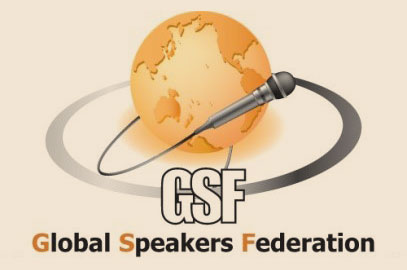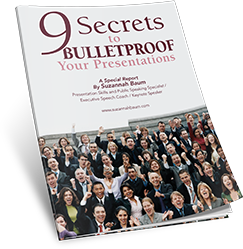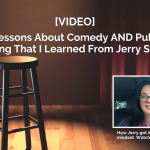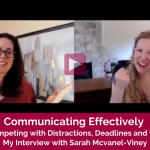Suzannah interviews Shelle Rose Charvet — Influence & Persuasion Expert, Author
(Suzannah’s note: This interview was originally recorded in December 2019, back in the pre-pandemic days when sitting next to someone was an acceptable form of social contact — more information on this below***).
Interview with Shelle Rose Charvet! (12-minute video with AMAZING insights on influence and persuasion)
In this fascinating interview, I speak with Shelle Rose Charvet, Expert in Influencing & Persuading, and author of the international best-selling book Words That Change Minds (just recently placed on the Forbes best seller list as one of top management books for entrepreneurs and executives).
Shelle shares valuable communication insights that will help you shift your conversations, influence your audiences, and persuade them towards your point of view.
Our conversation covered:
- The MOST important words you can use to build credibility in front of your audience
- The value of how “toward” and “away” language influences your audiences — How best to speak to an audience that you don’t have much information about
- How to increase your chances of making a good first impression, and how to enhance your credibility in front of both male and female audiences (because both audiences value different elements in a speaker!).
- How to modulate your voice for maximum impact
- How to adjust when your microphone slips right off (well, that was more of a surprise topic…)
- A LOT more! Like, really a lot.
(Full transcript of video below)
View this video directly on YouTube.
Enjoyed this interview? Have a question for Shelle? Leave a comment below, and let’s continue the conversation!
*** In mid-February 2020, I had sorted out all the video editing I put it in the ‘queue’ of all my scheduled posts, to post it around mid-March. Then COVID hit, so I put it on hold — largely because we were sitting side-by-side in the interview, and I didn’t want anyone to think that we had recorded it during the lockdown. I figured that life would go back to normal soon enough, I’d post it, and we’d get on with our lives. Alas, so many months have passed, COVID shows no signs of letting us off the lockdown hook, and I didn’t think it was fair to keep Shelle’s brilliance hidden away any longer).
So just to repeat….this video was originally recorded in December 2019. And now — ENJOY!) ***
VIDEO TRANSCRIPT
– Hi there, I’m Suzannah Baum, Public Speaking and Presentation Skills Strategist and today I am super excited to be here with Shelle Rose Charvet, an expert in influence and the author of the book “Words That Change Minds”. First of all Shelle, thank you for hanging out with us.
– My pleasure.
– For hanging out with me. We are at the CAPS Convention. The Canadian Association of Professional Speakers here in London, and I managed to grab her and take her away for a few minutes just so we could do this interview. What I first would love to hear about Shelle, I know all about your book. Can you tell us a little bit about your book and influencing behaviors?
– Super. My book, “Words That Change Minds” has been a great international bestseller for me. It’s kind of made my career. It’s called “Words That Change Minds”, and this past year I wrote the third edition and it got onto Forbes Bestseller List for best management book for entrepreneurs and executives, which is very cool. And the title kind of gives it away, “Words That Change Minds”, because the big problem is, most people use words that would change THEIR minds but they’re addressing other people who are not motivated by the same things and don’t have the same motivation triggers. The structure of what is motivating for them. I’d love to give a couple of examples of that.
– Oh please do, yes.
– Okay. So, when you’re trying to get somebody motivated or have an impact on someone, one of the first things to realize is they’re in a different place than you are. So, I use a metaphor. So, I’m at my bus stop, the other people are at their bus stop. Like, for presentations, a presentation is a journey for me. And the very first step is to get people to want to get on your bus. So here’s an example. Let’s say I’m very goal oriented, I’ve got a goal for my presentation. Well, the other people might not care anything about being goal oriented, they’re preoccupied with the problems they have to solve. Well, goal-oriented language is something we call “toward language,” here’s what we’re trying to achieve, here’s what we’re trying to get, this is where we want to go. Well, if they’re thinking about the problems the language that’s motivating for them is, we need to avoid, prevent and solve. So, if I’m using ‘toward language’ when a group of people wants to get away from something, they’re not going to be interested by my message. And the whole book is about all these different motivation triggers, and it enables you to find out what is truly motivating your audience, so that you can invite them on your bus.
– So, how can you tell if an audience you’re in front of needs to hear the ‘toward language’ or the ‘away language?’
– So, one of the first things you gotta do is a little bit of homework. Like, why am I making this presentation? What are the things that matter for these people? And then with my toward and away from ears, I’m listening for, “Oh, we have this objective, we want you to help us get this objective.” Well, that’s kind of toward. Or are people saying, “You know, we’re having these issues, and we want to talk about what are the solutions, how can we stop this from happening again?”? And maybe it’s a sequence. Maybe first they want to get away from a problem, then achieve an objective. But if you understand these patterns, these triggers, you ask some questions beforehand, and then you can do what you need to do. Another trigger I want to talk to people about: This one’s really important. A lot of people don’t want you to tell them what to do. They hate being told what to do. Think about what happens when your partner or your spouse tells you what you should do, right? Or somebody says, “Oh, you’ll love this thing!” That’s like, deciding for you. Well, if somebody is what we call, in this model, the language and behavior profile, “internal,” they like to gather information but decide for themselves. If you don’t have credibility and you say words like “should”, and you’re totally enthusiastic, the people that are in an internal mode in your audience are going to go, “Don’t tell me what to do.” And they become more skeptical. So, instead of that, if your audience is mainly internal, and I like to assume they are, I don’t want to assume I have credibility. I want to look for proof that I have credibility. I’ll use language for people that are in internal mode. So, may I make a suggestion? Can I make a suggestion?
– Absolutely.
– Well, that’s the language.
– Thank you.
– You’re welcome. I have trouble with scarves,
– I adore scarves, I have trouble with scarves.
– We gotta stick together. Okay
– So people who are in internal mode and you’re not sure whether or not you have credibility, assume they want to decide for themselves, they’re internal. They’re not external and you can tell them what to do and they’ll do it. So, you make a suggestion. May I make a suggestion? And then tell them why the suggestion might work. And now, that’s where we use toward and away from language. So I call this, the “suggestion model.” I’m not telling you what to do, it’s just a suggestion. So, “may I make a recommendation?” “Here’s why it might be useful.” And then you tell them what problem it would solve, that’s ‘away from’ language. What you will gain from it, and why it’s not so difficult to do. Let me do an example.
– Okay.
– I suggest it’s probably a good idea to ask a few questions about your audience before you go and address them. That way you can avoid making a certain number of mistakes because there’s things you didn’t know, and it’s easier to get to their bus stop. And asking a couple questions is not so difficult. So, I made the suggestion, I said what problem you get away from, what problem it solves, what benefit you gain, and why it’s kind of easy to do. That is a model that works great for people who are a little bit skeptical and don’t want to be told what to do.
– Okay, so when it comes to giving presentations, what advice would you give for those who, let’s say are going in front of an audience who they don’t have a lot of information on. Because, certainly if you’re going in front of a corporate audience, you could have some phone conversations, you can get an idea, you can have this conversation where you can get a better idea of what their motivations are, but if you’re getting in front of an audience and you don’t quite know, you haven’t been able to interview them because sometimes you’re just not given that opportunity
– That’s right.
– And you’re kind of going in blind. So, what is your recommendation for that?
– I like to have a couple of assumptions about an audience that I don’t know. One is, I’m not yet credible to them. Therefore, they’re internal to me. They don’t want me to tell them what to do. They want me to make a case, that they’ll decide whether or not they agree. So, that’s a safer assumption than assuming you have credibility. Think about the mistakes you could make if somebody said “Oh, I’m glad you’re coming in to make this presentation, they’re going to adore you.” And then you go in and think, “hey, I’m a big mucker here, I’m an important person” and you tell people all the experience you’ve had and what they should do. And they’re all sitting there with their arms crossed. You go, I’ve made a big mistake. So, assume that you need to establish credibility rather than you already have it.
– Okay.
– Assume they’re internal, use suggestive language but be confident, don’t be sort of whiney and “I’m not sure if this would work for you.” Be confident, but my suggestion, modeling here, here’s the example, my suggestion is that you assume they’re internal. Use a suggestion model or make suggestions, look credible, and that way, fewer people will object to what you’re saying and more people will get on board and they get on your bus and then you can take them somewhere.
– Excellent.
– Okay, Shelle, I also want to know, now that you’re getting in front of this audience and you are delivering the right words, and the most influential words, is there a role that delivery, almost in terms of platform skills, how you stand, how you move, how does that feature in?
– Okay, well, the first rule is above all, don’t be boring. One of the problems with human neurology is that we get used to things really, really quickly. So that if you have the same style, people get used to it and it’s no longer interesting. Just the same way that when you first go into a kitchen where someone is cooking your favorite stuff , ah, it’s so nice, but five minutes later you can’t smell it. Our neurology is designed to pick up what’s new and different, so varying your style. Another thing that’s really, I think, useful… This is a suggestion I would make, is to think about two non-verbal styles. This is work based on Michael Grinder’s work in non-verbal communication and he said, there’s two non-verbal styles. One is credible, so think about all your newscasters. It’s straight, it’s to the point. Your voice goes down toward the end of your sentences. That’s great for key messages, but it’s boring. So mark it out, be credible on your key messages is my suggestion, and the rest of the time, you can be more approachable, right? So you can be approachable, which is a bit less credible because you go up at the end of your sentences, lots of facial gestures, asymmetrical movements and then for your key messages, slow down. Direct eye contact, symmetrical body posture, and down toward the end of your sentences. But you don’t want to do the whole thing like that because it’s too boring. And really, if you can vary your behavior you will be less boring than, oh 93.4, just made that up, 93.4% of other presenters.
– Okay, okay, so that’s fascinating. Now it made me think of one last thing. So the last question I guess, is in terms of males and females, is there a different way or different kind of language that you need to use or you need to be mindful of? I mean, considering also that there will usually be both males and females in the audience, so how do you have to modify?
– So, I’m going to make a generalization and there’s exceptions. So I just talked about credibility and credible style, approachable style. For non-executive women, be approachable first, credible second. I’m generalizing, it doesn’t fit all cases. And for audiences where there is mainly men, do credible first and approachable second. You know, men are given credibility. They can lose it by being an idiot, but if you can put a suit on and stand up in front of a group, people assume you’re credible. It’s still not true for women. You still have to earn credibility, and the problem with the people who need to believe you, who need you to be credible, they will dismiss you much quicker than the ones who want to like you. So, for those kind of audiences, if the audience is going to be tough, and they could be full of tough women as well as tough men, right? If you think the audience is going to be tough, do credible first, and then be approachable.
– Okay, and in terms of credible, what do you think are the top two or three things that you need to establish right away, in order to establish the credibility?
– Third-party credibility is great, so whoever introduces you needs to show third-party credibility, like Forbes, my Forbes book thing, which was a big surprise to me but it was, wow! I thought that’s great!
– Well deserved.
– I think so! But it’s not up to me to decide, so third-party credibility helps. And then being able to casually mention the things that make you credible. There’s three magic words for credibility too, as long as you can follow them up with something. In my experience, those words are very powerful. “In my experience.”
– In my experience.
– In my experience.
– Those words, yes.
– Yeah, Those are credibility establishing phrases, right?
– Yeah, and actually here at this convention full of professional speakers, I have heard that on several occasions.
– People saying,
– “In my experience,” and “I believe, that in my experience this is the way it is.”
– That’s right, and it’s also not bossy. Because when you say in my experience, you’re not telling them, “you should do this.” Nobody’s saying that, right?
– Yeah, well, Shelle, this has been fantastic. Thank you so much for taking the time to share
– Oh my pleasure, Suzannah. all of this about influential communication, about “Words That Change Minds”, about the credibility piece, it’s been hugely valuable. Hugely valuable, I think for anyone stepping up and giving presentations, whether you are walking in front of an audience that you know, or even walking in front of an audience that you don’t know I think it’s equally important to always keep these things in mind, so I really do thank you for taking the time to do this
– This has been fun Suzannah. Thank you very much.
– Okay, bye!
– Bye!





